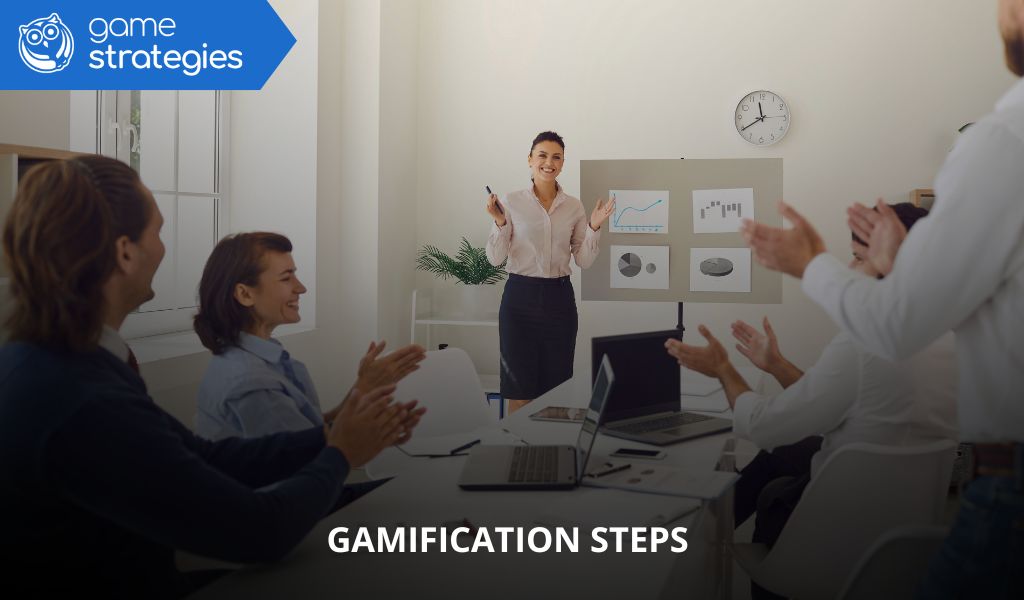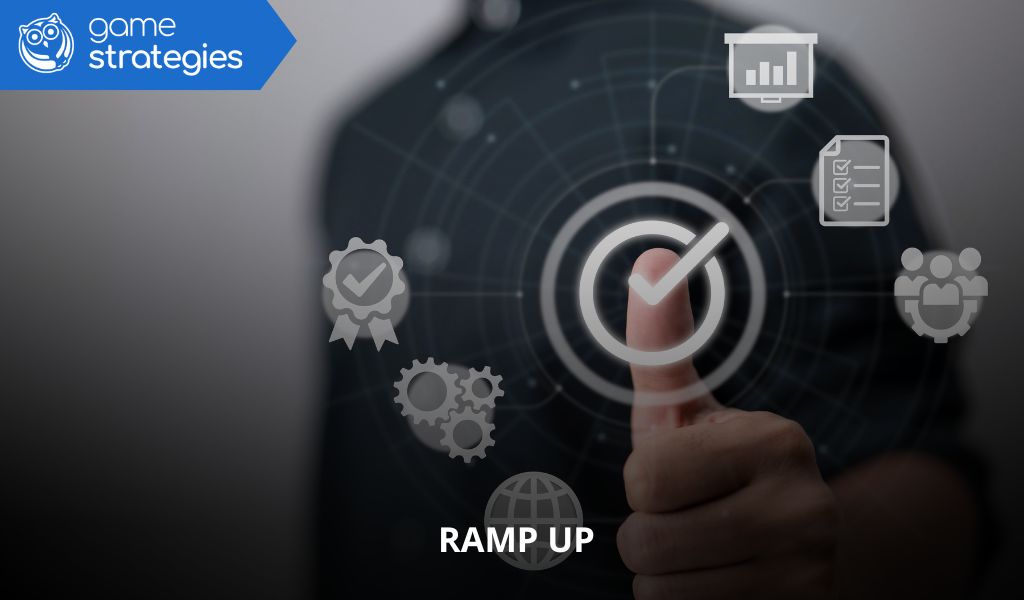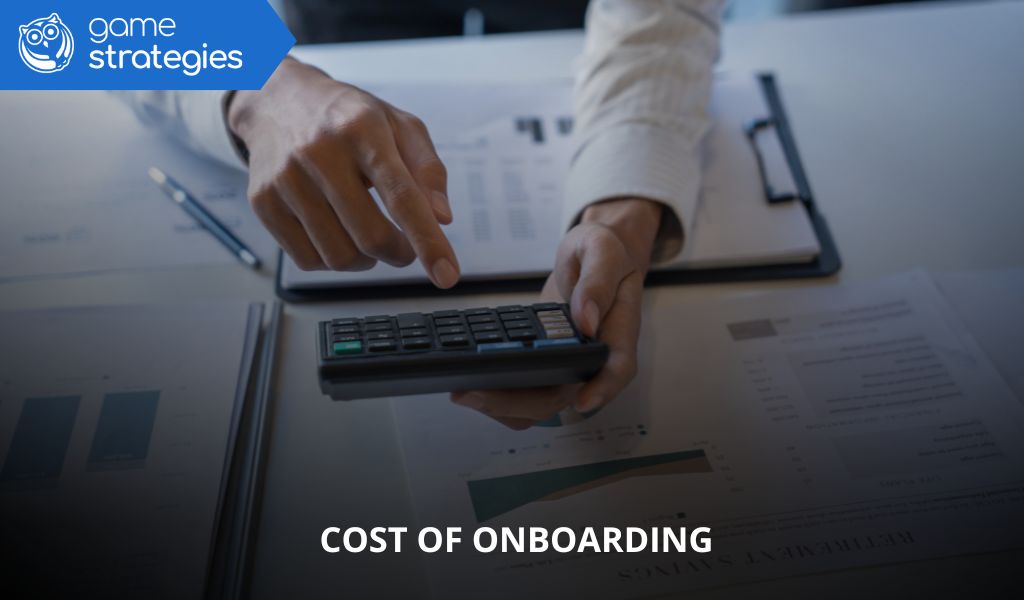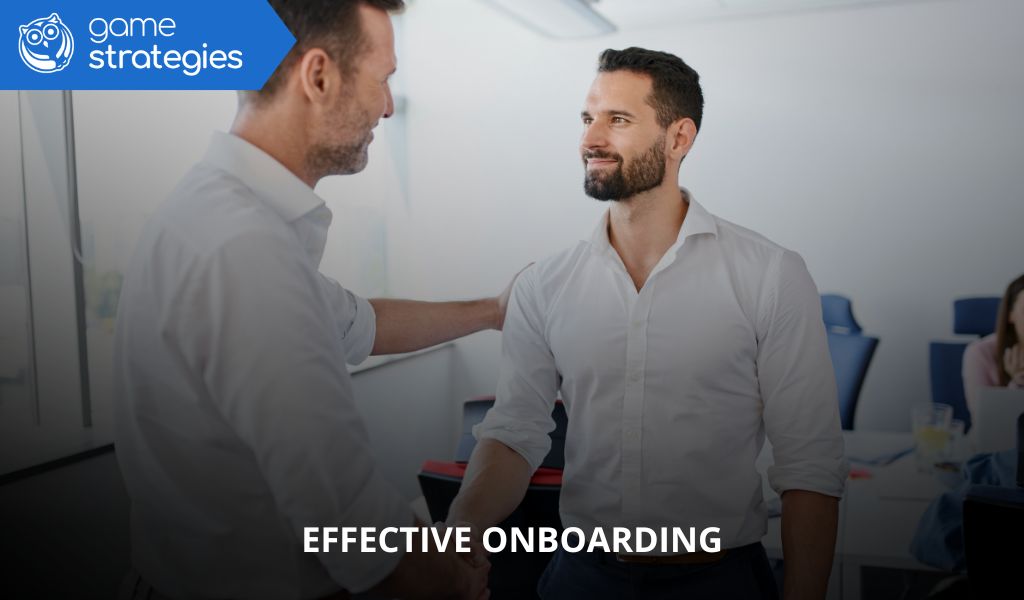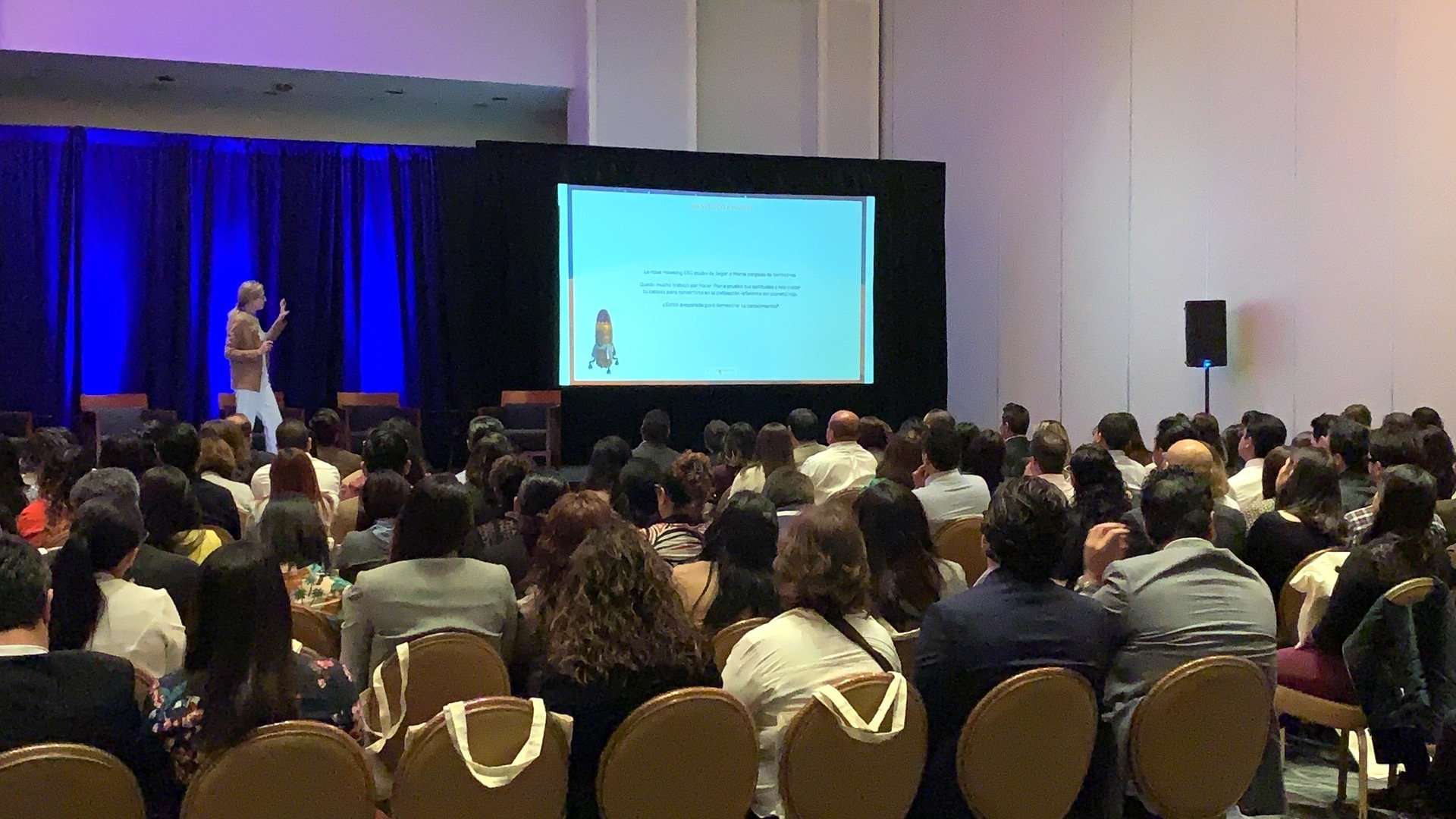Corporate gamification is reshaping how organisations train and motivate their people. By applying game elements to learning contexts, you can boost participation, learning and commitment. However, for this strategy to succeed, you need a clear roadmap. In this article, we share the 10 essential gamification steps to implement a corporate gamification plan with real impact.
Discover how to do it effectively with support from experts like Game Strategies, specialists in corporate gamification solutions.
1. Define your objectives and target audience
Identify SMART goals for gamification
Objectives must be Specific, Measurable, Achievable, Relevant and Time-bound. This provides a clear roadmap for programme development.
Examples include: improving knowledge retention among new hires by 20% within the first three months, or reducing onboarding time by 15%. These targets underpin the game mechanics and success indicators you’ll use across your gamification steps.
Determine participant profiles
Knowing your audience in depth lets you personalise the gamified experience. Analyse age, role, prior experience, digital level and key motivators.
For instance, a sales team may respond better to competitive dynamics, while a group of developers might prefer collaborative, problem-solving missions. This analysis ensures your gamification steps are relevant and effective for each group.
2. Choose the right game mechanics
Points, levels and scoring schemes
These core mechanics help users visualise progress and feel constant advancement. Award points for completing modules, answering questions correctly or collaborating in forums. Levels segment the learning path and create interim goals to sustain interest.
Challenges and missions aligned to internal processes
Design challenges that mirror day-to-day work to reinforce meaningful learning. A mission might involve solving a complex client case using newly acquired knowledge. These dynamics both assess and develop skills directly applicable on the job—central to effective gamification steps.
Leaderboards and progress tracking
Leaderboards can stimulate healthy competitiveness and a sense of achievement when well managed. Implement them by team or individually, depending on your aims. Visual progress (progress bars, achievement maps) increases transparency and motivates continued participation.
3. Design motivating narrative and setting
A compelling story draws learners in and turns learning into an emotionally meaningful experience—one of the most underestimated gamification steps.
Avatar creation and personalisation
Let users create avatars and customise profiles to strengthen identification with the gamified environment. This deepens emotional engagement and immersion. Include visual badges, accessories or titles unlocked as achievements build.
4. Define rewards, incentives and badges
Positive reinforcement sustains participation and desired behaviours.
Set both symbolic and tangible rewards
Combine material incentives (bonuses, time off, event tickets) with symbolic ones (digital certificates, public mentions). Rewards should recognise effort without becoming the sole motivator.
Design badges that reflect key competencies
Digital badges certify specific achievements and can feed into employee profiles, evaluations or even professional networks such as LinkedIn. Linking badges to concrete skills (leadership, critical thinking, customer care) elevates the real value of learning.
Ensure rewards align with corporate culture
Not every reward fits every context. In purpose-driven organisations, public recognition or opportunities to lead new projects may be more valued than monetary rewards. Make sure incentives reinforce organisational values—an often-overlooked gamification step.
5. Select the right technology platform
Technology is the vehicle that enables and scales gamification. Choose a platform that’s easy to use, customisable, tracks metrics and integrates with existing learning systems.
Solutions like Game Strategies provide end-to-end support—from design to results analysis—streamlining your gamification steps.
6. Pilot the plan and gather feedback
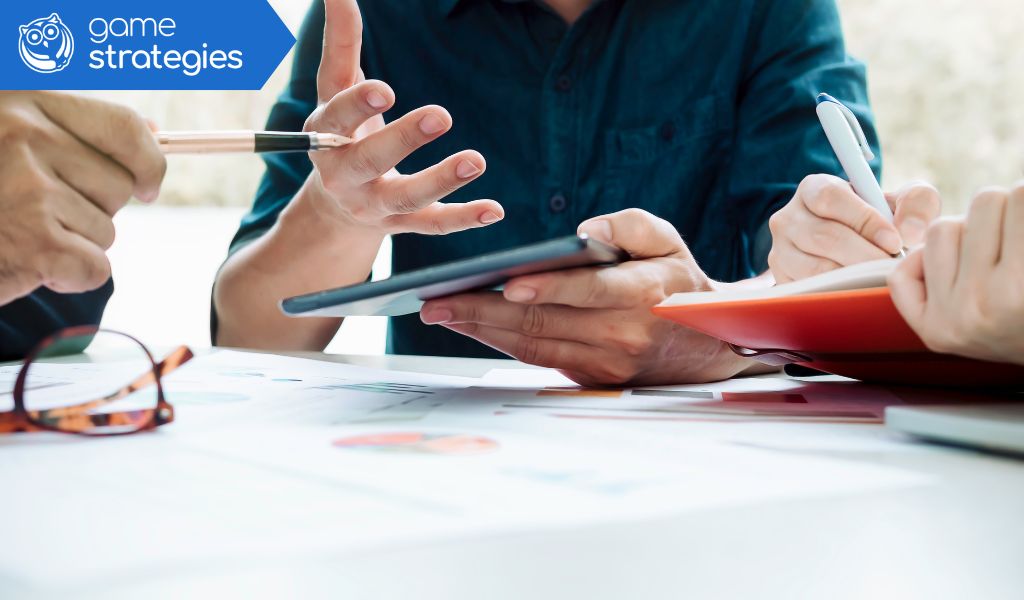
A pilot validates hypotheses and lets you refine the experience before a full launch.
Define controlled pilots with key indicators
Choose a small, representative user group (by department, seniority or tenure) and decide which metrics to observe—participation rate, improvements in knowledge checks, qualitative feedback.
Collect data: participation, issues and satisfaction
Use satisfaction forms, interviews and analytics to evaluate user response. Pay special attention to technical barriers, difficulty level and narrative interest.
Adjust dynamics based on pilot results
Identify what works and what needs refining. Simplify certain mechanics, add tutorials or tweak rewards according to feedback. A successful pilot builds confidence for organisation-wide implementation.
7. Roll out gamification across the organisation
Large-scale deployment requires preparation, clear communication and visible leadership.
Training and communication for all employees
Run introductory sessions explaining what gamification is, how it will be applied and the benefits. Use explainer videos, internal platforms and quick-start guides to spread the message.
Implement the strategy in onboarding and internal training
Embedding gamification from day one helps build a culture of continuous learning. Gamified onboarding is a powerful tool to accelerate the ramp-up of new talent.
Back it with leaders as internal champions
Team leaders should participate first, set the example and motivate others. They can act as mentors or ambassadors, reinforcing commitment across the workforce.
8. Measure results and optimise with data
Success depends on continuous measurement and iterative improvement—critical gamification steps for long-term impact.
Set KPIs: engagement, completion, performance
Define indicators such as module completion rate, interactions per user, improvement in knowledge tests and NPS of the gamified experience.
Monitor in real-time dashboards
Platforms like Game Strategies provide dashboards to track user progress, identify gaps and optimise the experience—enabling swift, evidence-based decisions.
Periodic review and continuous improvement of mechanics
Schedule quarterly reviews to assess outcomes, reset goals and update mechanics. Keeping the experience fresh prevents “game fatigue”.
9. Foster a sustainable play culture
Gamification should not be a one-off initiative but an integrated cultural approach.
Reinforce with new missions and levels regularly
Roll out updates with fresh stories, challenges and levels to maintain interest—timed with quarter changes, product launches or corporate events.
Communicate milestones and celebrate achievements publicly
Acknowledge progress via newsletters, internal networks or awards events. This builds motivation and positive sentiment around the programme.
Embed gamification into culture and corporate identity
Infuse game dynamics into performance reviews, wellbeing and innovation programmes so gamification becomes a cross-functional, sustainable practice.
10. Avoid common mistakes and frequent risks
Poor implementation can backfire and hurt motivation.
Avoid excessive rewards that distort value
Over-incentivising can crowd out intrinsic motivation, making people engage only for the prize. Balance recognition with learning value.
Balance competition and collaboration
Too much rivalry can create conflict and disengagement. Alternate individual dynamics with team-based challenges to promote collaboration—an essential balancing act within your gamification steps.
Gamifying corporate training can be a turning point in your organisation’s performance. By following these 10 gamification steps—and leveraging specialised solutions like Game Strategies—you can design experiences that are motivating, measurable and sustainable over time.
Ready to turn learning into a truly transformative game experience?
¿De cuánta utilidad te ha parecido este contenido?
¡Haz clic en una estrella para puntuarlo!
Promedio de puntuación 0 / 5. Recuento de votos: 0
Hasta ahora, ¡no hay votos!. Sé el primero en puntuar este contenido.

